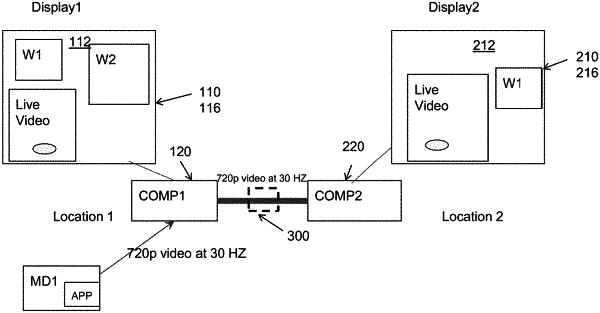| CPC G06F 3/1454 (2013.01) [G06F 3/147 (2013.01); G06F 3/1431 (2013.01); G06F 9/452 (2018.02); G06Q 10/101 (2013.01); G09G 5/14 (2013.01); H04L 65/403 (2013.01); H04L 65/4015 (2013.01); G09G 2360/04 (2013.01)] | 20 Claims |

|
1. A method of collaborating between a first display computer associated with a first display at a first location and a second display computer associated with a second display at a second location, the method comprising:
establishing a connection between the first and second display computers;
opening a virtual canvas to be shared by the first and second display computers, the virtual canvas to be displayed on the first and second displays simultaneously, wherein either the first display computer or the second display computer may be a host computer for objects on the virtual canvas; and
sending a first object other than a live object from a host computer of the first object to a non-host computer by sending data associated with the first object on the virtual canvas stored on the host computer of the first object from the host computer of the first object to the non-host computer to be stored locally, thereby creating a shared canvas;
storing the first object locally on the non-host computer;
sending data associated with a second object that is a live object on the virtual canvas stored on a host computer of the second object from the host computer of the second object to the non-host computer to be stored locally;
streaming the second object from a host computer for the second object, wherein
each of the first and second objects are at respective single locations on the shared canvas; and
content of the second object is continuously synchronized with the host computer.
|